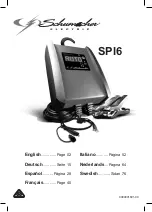
IN CASE OF EMERGENCY
325
TOWING A DISABLED VEHICLE
This section describes procedures for towing a disabled vehicle using a commercial towing service. If the transmission and drivetrain are operable, disabled
vehicles may also be towed as described
CAUTION!
Racing the engine or spinning the wheels may lead to transmission overheating and failure. Allow the engine to idle with the transmission in NEUTRAL for
at least one minute after every five rocking-motion cycles. This will minimize overheating and reduce the risk of transmission failure during prolonged efforts
to free a stuck vehicle.
When “rocking” a stuck vehicle by shifting between DRIVE and REVERSE, do not spin the wheels faster than 15 mph (24 km/h), or drivetrain damage may
result.
Revving the engine or spinning the wheels too fast may lead to transmission overheating and failure. It can also damage the tires. Do not spin the wheels
above 30 mph (48 km/h) while in gear (no transmission shifting occurring).
Towing Condition
Wheels OFF The
Ground
2WD Models
4WD Models
Flat Tow
NONE
If transmission is operable:
Transmission in NEUTRAL
30 mph (48 km/h) max speed
15 miles (24 km) max distance (6–speed transmission)
30 miles (48 km) max distance (8–speed transmission)
Auto Transmission in PARK
Transfer Case in NEUTRAL
Tow in forward direction
Wheel Lift Or Dolly
Tow
Front
NOT ALLOWED
Rear
OK
NOT ALLOWED
Flatbed
ALL
BEST METHOD
BEST METHOD
7
22_DPF_OM_EN_USC_t.book Page 325
















































